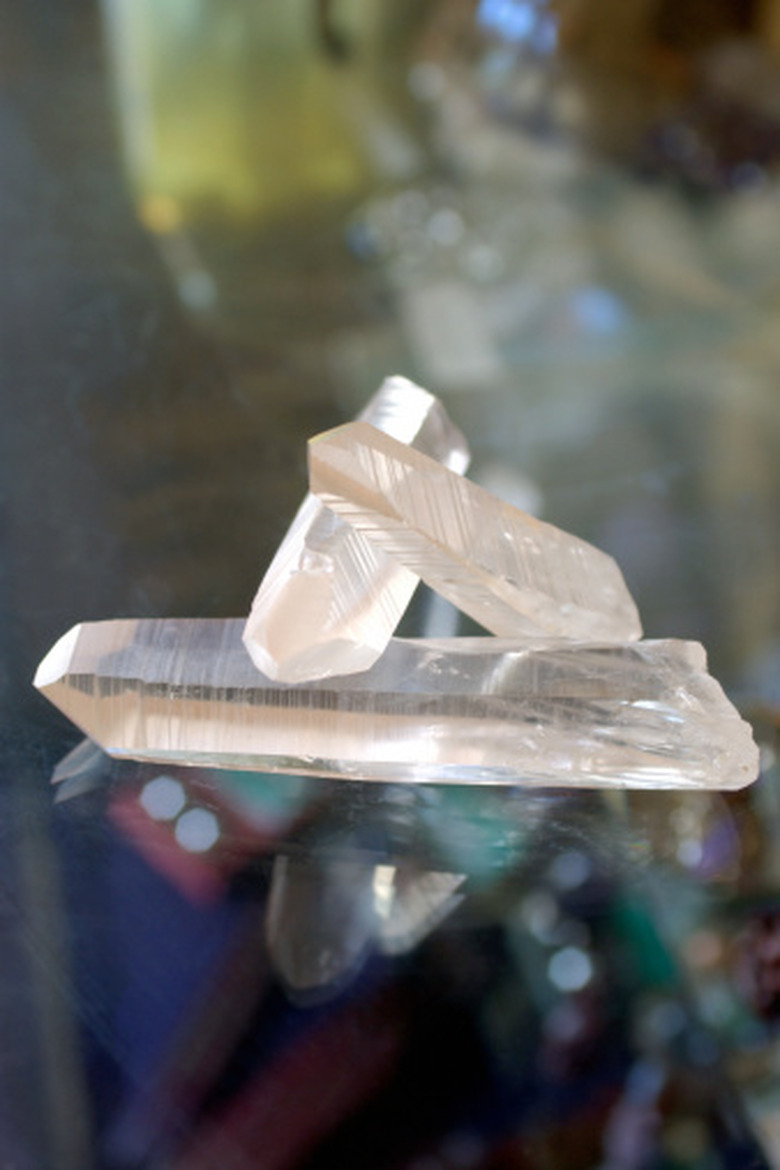How To Tell The Quality Of Quartz
Quartz – chemical name silicon dioxide – is one of the most common minerals found on the earth's surface. Quartz covers a wide variety of stones, many of which are used decoratively for their durability and ornamental nature. Different types of quartz include amethyst (purple quartz), citrine (yellow), rose quartz (light pink), and smoky quartz (dark, translucent gray). Determining the quality of quartz requires the examiner to determine whether the quartz is real or manufactured.
Step 1
Check the temperature and weight of the quartz in your bare hands. If it is heavier than a similarly sized piece of plastic, it is probably of a relatively high quality. Also, check to see what the surface temperature of the quartz is prior to handling it. Good-quality quartz is cool to the touch, like glass; a piece of plastic that has been manufactured to resemble quartz will feel warm or room temperature to the touch. Keep in mind, however, that glass made to resemble quartz will also be cool to the touch, although it will be smoother and less varied.
Step 2
Examine the color of quartz. Naturally occurring quartz will have irregular striations and color distribution. Check the quartz for cracks and fissures. Quartz is more valuable when it is completely intact; however, a piece of naturally occurring quartz of unusual color is still worth more and of higher quality than a smooth piece of manufactured plastic or glass designed to imitate quartz. The external surface of the gem may be covered what looks like dull rock, while the interior shows a glossy, colorful surface – this means the quartz was mined from part of the earth's surface, making it a higher-quality specimen.
Step 3
Use a magnifying glass to get a close-up look at the surface of the quartz. The surface should be streaked with white and show naturally occurring irregularities. Glass made to look like quartz will be smoother and show few, if any, striations or streaks in its surface, with even color distribution that may be pleasing aesthetically but are not characteristic of genuine quartz.
Step 4
Determine the origin of the quartz. At the point of sale, you should be able to find out where real quartz came from. If your quartz sports a "Made In" label, chances are it was manufactured from non-quartz materials. Also remember that real quartz is less expensive than manufactured quartz because it does not require any processing beyond mining it from rocks. To determine if your quartz sample is genuine and high quality, refer to the most abundant naturally occurring quartz locations worldwide. Amethyst occurs naturally in Brazil, Uruguay, Mexico, Russia, and the Thunder Bay region of Canada. Smoky quartz is found most frequently in Brazil, Colorado, Scotland, and the Swiss Alps. Rose quartz is found mainly in Brazil. Citrine can be found alongside amethyst deposits.
Things Needed
- Quartz sample
- Magnifying glass
References
Cite This Article
MLA
Clairenstein, Goody. "How To Tell The Quality Of Quartz" sciencing.com, https://www.sciencing.com/tell-quality-quartz-8597683/. 24 April 2017.
APA
Clairenstein, Goody. (2017, April 24). How To Tell The Quality Of Quartz. sciencing.com. Retrieved from https://www.sciencing.com/tell-quality-quartz-8597683/
Chicago
Clairenstein, Goody. How To Tell The Quality Of Quartz last modified March 24, 2022. https://www.sciencing.com/tell-quality-quartz-8597683/
